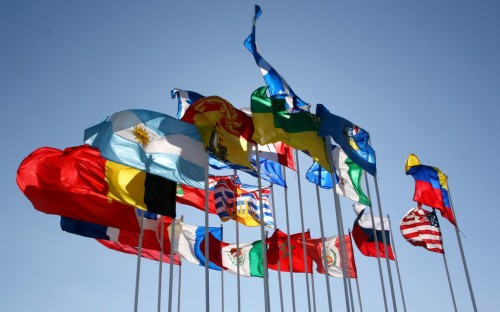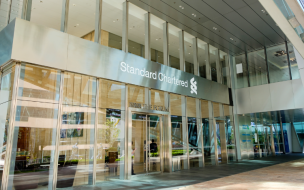Any MBA knows that diversity is a key component of a modern workplace. Business-schools are some of the most international environments you will find, and MBAs are joined from all over the globe. It is surprising to hear, then, that diversity initiatives have been failing for the past 30 years. But why do top companies fail the test of inclusiveness?
Conventionally, the responsibility for managing diversity and inclusiveness within an organization relies on the human resources personnel. Many organizations today have human resources (HR) professionals at the executive level that hold the title of “Chief Diversity Officer” or “Chief People Officer”, whose responsibilities include working with HR managers, function and line managers, and executives.
They seek to create an organizational vision to increase diversity and create a work climate that leverages diversity to achieve higher performance. (Lankau, 2013). But the problem with these specialized positions is that other managers often think that the diversity efforts rely solely on one person, instead of understanding the importance of leveraging diversity and contributing to inclusive work environments.
Yet diverse and inclusive don’t hold the same meaning. Diversity refers to the wide range of differences that exist among people. For instance, if an organization consisted of 100 white males, they would still be diverse in terms of age and generational differences, educational and socioeconomic backgrounds, religious beliefs, thinking and work styles. In that case, organizations may want to increase the representation of those from different racial, ethnic and gender backgrounds.
On the other hand, inclusion refers to “proactive behaviours that make each person feel welcome and a part of the organization”. While one organization may identify itself by being “diverse”, it doesn’t necessarily imply that it is an inclusive one. Inclusive environments accept differences and “work to create a culture of unique talents and outcomes.”
In his recently published book, The End of Diversity as We Know It: Why Diversity Efforts Fail and How Leveraging Difference Can Succeed, Dr. Martin Davidson of the University of Virginia’s Darden School of Business emphasizes the lack of critical perspective over organizational culture and how modifying it could contribute on fostering diversity for “learning, innovation and achieving superior results”.
Organizations acknowledged as the best places to work for minorities are “those that have a commitment to diversity from the highest-ranking executives” (Lankau, 2013). Their organizational culture promotes that everyone in the company will be equally committed with the different diversity efforts.
According to Lankau’s research and DiversityInc - a specialized ranking for the most diverse organizations - the majority of the organizations enlisted held in common various aspects:
- Clear and consistent emphasis on value of diversity in communication in vision, mission statement and strategic goals;
- Identification of business drivers for diversity (identifying how diversity can improve organizational results; examples include: innovation and creativity, strength of suppliers, market growth, leveraging human capital and customer satisfaction);
- CEO and top management team involvement in diversity-related activities;
- Active diversity councils, advisory boards, and employees resource groups;
- Commitment to increasing supplier diversity;
- Formal and facilitated informal mentoring programs;
- Community and philanthropic outreach for multicultural non-profits;
- Partnerships with educational institutions for increasing minority student enrolment, support and development;
- Measures of progress and accountability mechanisms.
Taking into consideration this list, Lankau claims that “it becomes obvious that it [diversity] can’t just be the human resources manager’s responsibility”. In order to achieve such a degree of diversity, a certain level of commitment is necessary across all functional areas of a particular organization.
According to a study by the Society for Human Resource Management and Fortune Magazine, 52 per cent of employers say a good diversity initiative improves relationship with clients. 79 per cent of the respondents said it improves their corporate culture; another 77 per cent said it improves recruitment of new employees. More than half said it decreases interpersonal conflict among employees (58 per cent), increases creativity (59 per cent) and productivity (52 per cent).
To promote this commitment, various organizations have relied on diversity training and employment policies. According to an article in the Wall Street Journal, “all employees should understand that hiring decisions are based on finding the best candidates and not by quotas”.
By making sure managers fully understand the benefits of a diverse workplace, a sense of commitment is born among that particular group and the organization could be on its way to become a more inclusive one. Nevertheless, initiatives based solely on “training” have not been able to deliver successful results.
A study of more than 829 companies over 31 years showed that diversity training had “no positive effects in the average workplace”. After spending millions of dollars in training, attitudes of prejudice and bias were noted to become solidified. Furthermore, the researchers concluded that "in firms where training is mandatory or emphasizes the threat of lawsuits, training actually has negative effects on management diversity”.
A generational approach to managing diversity
Born between 1946 and 1964, ‘baby boomers’ are predominately in their 40s and 50s. This generational group has been extensively studied and researched by sociologists, economists, demographers and marketers over the last decade. They are well-established in their careers and hold positions of power and authority. This generational segment constitutes a large majority of today’s business’s leaders, corporate executives and senior managers.
Generational studies have indicated that baby boomers are predominantly idealistic, competitive and often like to question authority. But they show a lack of adaption to change and technology, including in this case, diversity and inclusion.
Perhaps the failure of the initiatives that aim to promote diversity in the workplace could be largely contributed to the generational group in control, which is the same one exposed to this type of training.
A report published the United Nations Joint Staff Pension Fund indicates that GenX (those born between 1965 and 1980) and GenY (those born between 1981 and 2000) “are making today the most significant impact in the workplace”. They are empowered, consumer oriented, technologically savvy and they “are not afraid to speak up for a change in their workplace”.
The report explains that baby boomers are “afraid” of new technology and changes in the workplace. Furthermore, recent generations are “simply not afraid to expect more from their employers and they are certainly not afraid to ask for more”. Such attitudes can be viewed by traditionalists and boomers as “rude” and “presumptuous”.
The biggest danger, according to the report, might be the impact that emotionally “unintelligent managers” are having on the younger generations, due to their reactions and judgements. As a result, GenY and GenX employees leave managers and not organizations with the frustration of a workplace characterized by significant decreases in productivity, increases in workplace conflicts and turnover caused by inadequate administration.
Diversity initiatives should be in the hands of the newer generations who have grown up in diverse, globalized and multicultural environments. Despite their solid presence in the workplace, labour statistics indicate that nearly 80 million baby boomers will exit the workforce in the next decade.
These employees are retiring at the rate of 8,000 per day, or more than 300 per hour. This tendency could become an opportunity for the new generations of MBAs to take control of organizations and engage in reliable and effective diversity representation initiatives.
RECAPTHA :
a7
75
55
04







